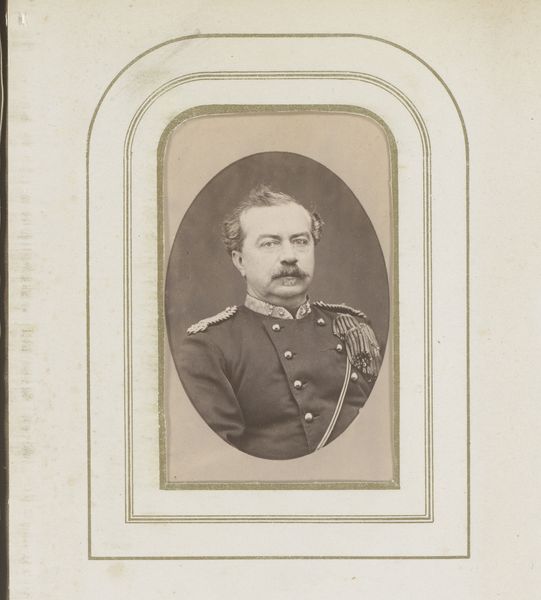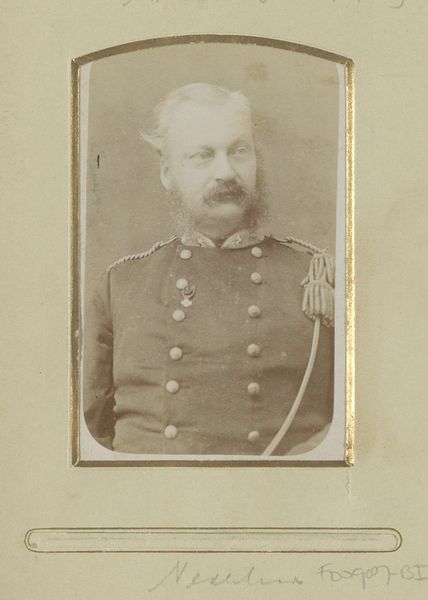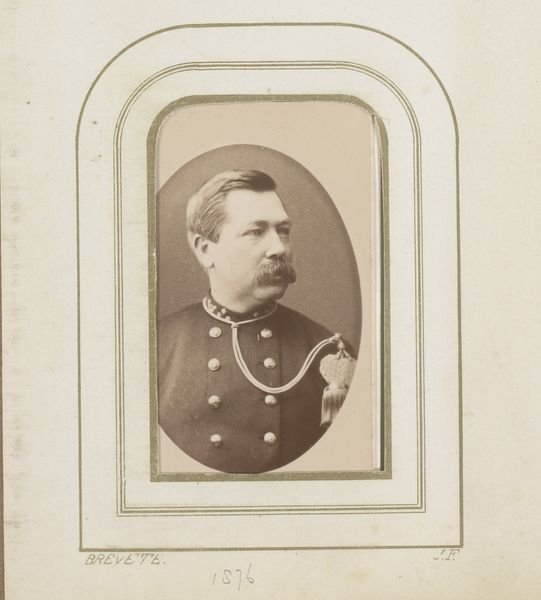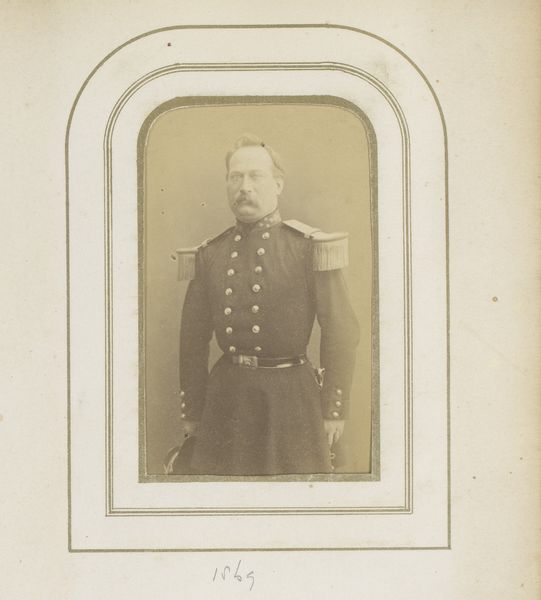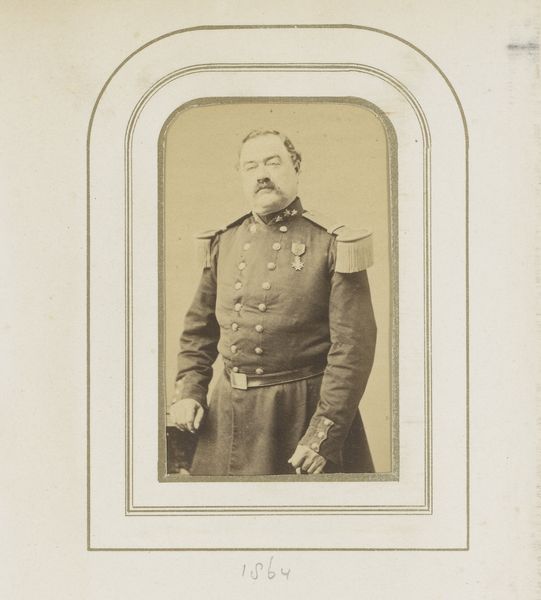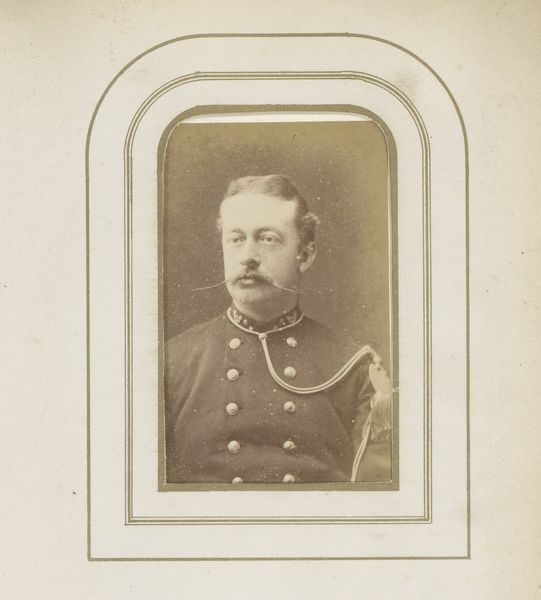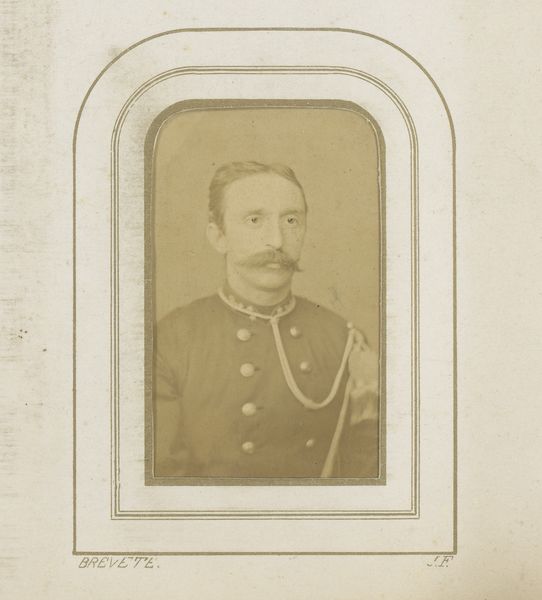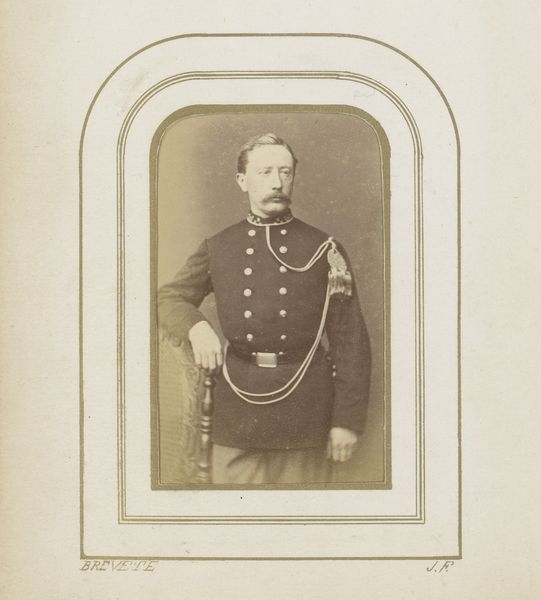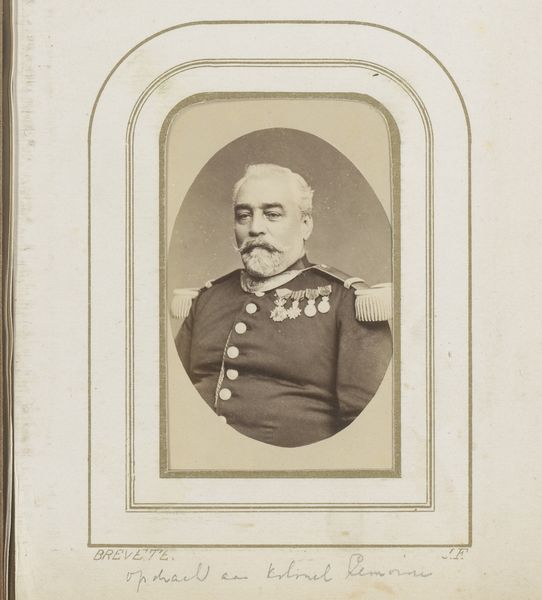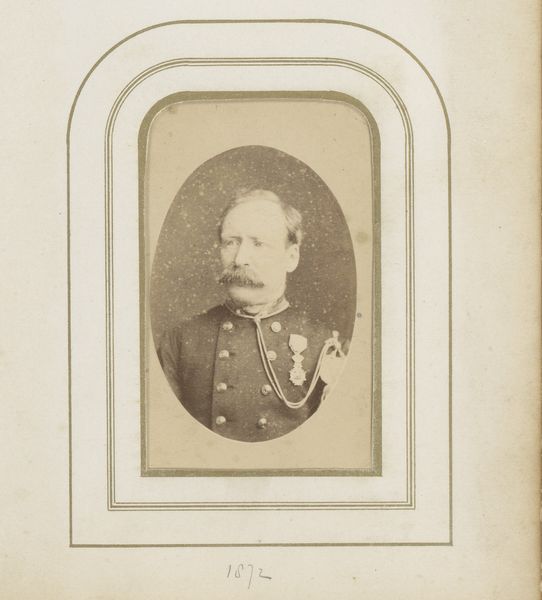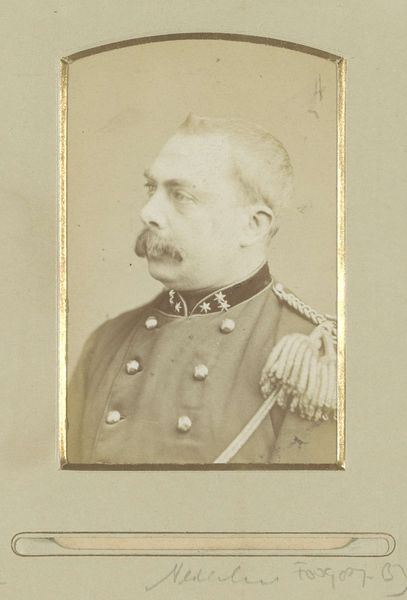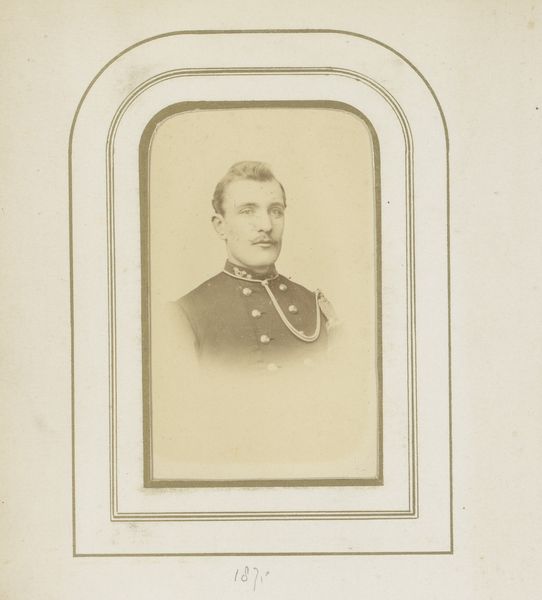
daguerreotype, photography
#
portrait
#
daguerreotype
#
photography
#
historical photography
#
19th century
#
academic-art
Dimensions: height 83 mm, width 50 mm
Copyright: Rijks Museum: Open Domain
Walter Damry made this portrait of a moustachioed man in uniform, sometime in the late 19th century. It's a photographic print, likely albumen, made at a time when photography was rapidly becoming industrialized. The smooth, sepia surface belies the complex chemical process that went into its making. From coating the glass plate with light-sensitive emulsion, to the precise timing of the exposure and development, each step demanded skill and consistency. Photographic studios like Damry's were essentially factories, employing technicians to produce images on demand. Consider the social context: this officer's formal attire speaks to the rigid hierarchies of the military, and of European society at the time. The photograph itself, a relatively affordable commodity, allowed for the widespread dissemination of such images, reinforcing those power structures. What was once a rare and precious artwork became a mass-produced item. Understanding this transformation is key to appreciating not only the photograph's aesthetic qualities, but also its cultural significance.
Comments
No comments
Be the first to comment and join the conversation on the ultimate creative platform.
